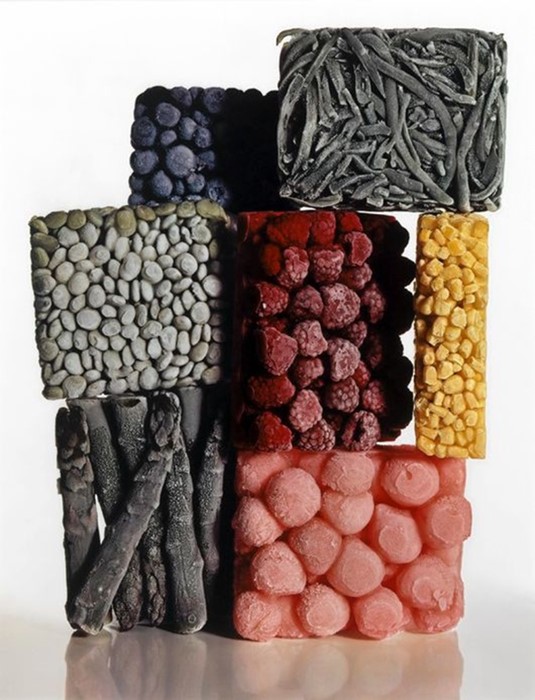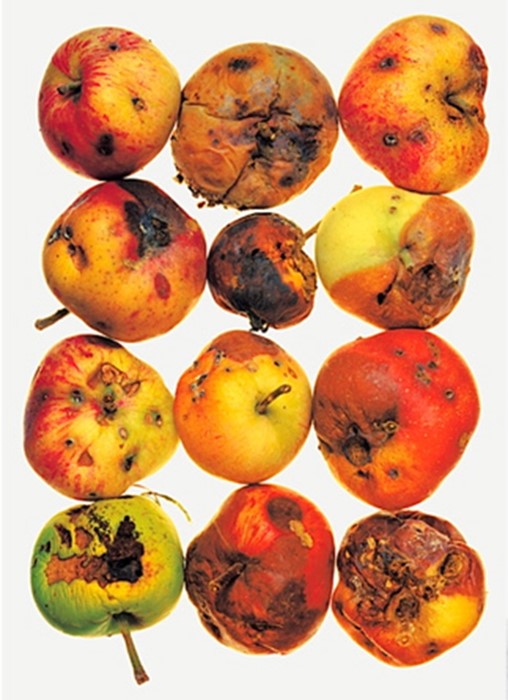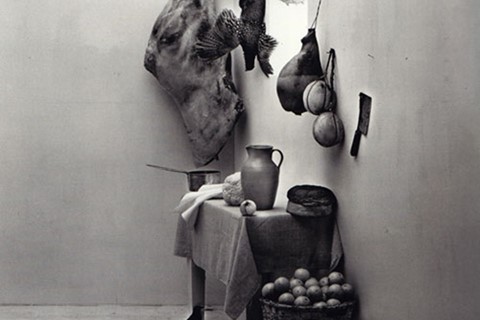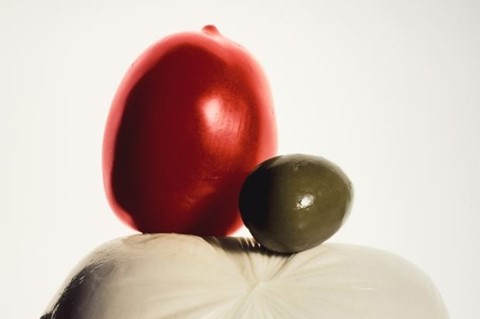We consider an additional chapter in the multiplicity of Irving Penn’s talent, his brilliant still lifes
Who? Irving Penn, best known for his fashion photography and startlingly exposing portraits of celebrities, trained first as a painter at the Philadelphia Museum School of Industrial Art. He continued to paint and draw throughout his long career as a photographer, and it is these skills of draughtsmanship and composition that are most firmly pronounced in his less renowned still lives, in which he created the most unusual and beautiful configurations of foodstuffs, fashion and animals.
"Turning the gaze away from Penn's intoxicating fashion images, one finds an extraordinary repertoire of shots that take the classical notion of the still life and subvert it"
What? “If you’re going to do such a radical thing as a still-life cover, why don’t you get the best still-life photographer to do it?” The words of an irate Edna Chase, editor of Vogue, at the news that art director Alexander Libermann had commissioned the youthful Penn to shoot the cover. Yet the result was the work of a consummate master – an elegant visual vignette of belt, bag, gloves and lemons that fronted the magazine in 1943, and which would be the beginning of a collaboration between man and magazine that lasted over half a century.

Why? It is of course the fashion images that spring first to mind when considering Penn. His photographs define our perception of the 1950s: the stark silhouette, the swoops of eyeliner, the poise and impossible perfection of the models swathed in couture. Yet, turning the gaze away from the intoxicating clothes, one finds an extraordinary repertoire of shots that take the classical notion of the still life and subvert it, bringing raw power to the most prosaic of objects. Rotten apples gleam in rows; an unconcerned mouse scratches under a hanging larder of luxurious delights; amid a fruit bowl reminiscent of the set of a Dutch master, a fly makes merry on a lemon. These images, at first glance incidental, are masterworks in elevating the banal to the exquisite, an additional chapter in the multiplicity of Penn’s talent.



